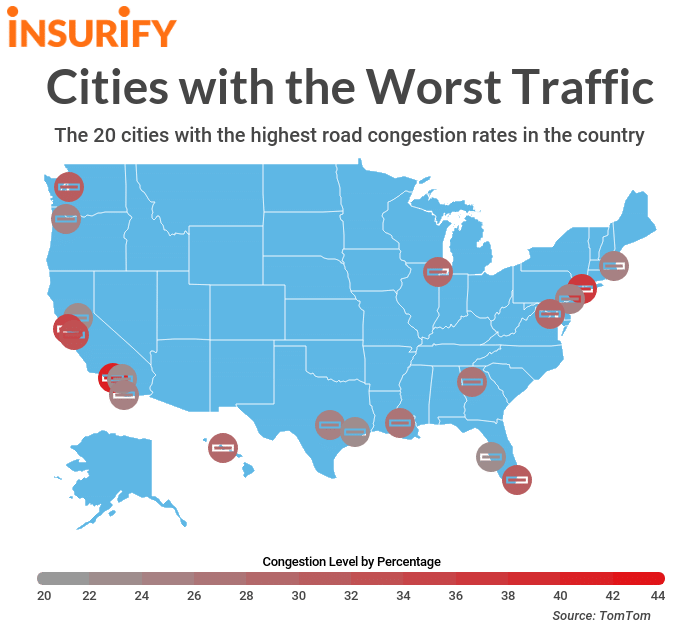Life in the Slow Lane: Cities with the Most Traffic
)
)
Insurify’s team of data scientists and content specialists presents Insurify Insights, a series of automotive, home, and health studies focusing on the topics that impact us all. Through expert analysis of over 4 million car insurance applications and an array of top data sources, the Insurify Insights team produces new data-driven articles, trend analyses, regional superlatives, and national rankings every week. See Insurify Insights as featured in Forbes, Fox News, USA Today, NPR, and more.
Published
At Insurify, our goal is to help customers compare insurance products and find the best policy for them. We strive to provide open, honest, and unbiased information about the insurance products and services we review. Our hard-working team of data analysts, insurance experts, insurance agents, editors and writers, has put in thousands of hours of research to create the content found on our site.
We do receive compensation when a sale or referral occurs from many of the insurance providers and marketing partners on our site. That may impact which products we display and where they appear on our site. But it does not influence our meticulously researched editorial content, what we write about, or any reviews or recommendations we may make. We do not guarantee favorable reviews or any coverage at all in exchange for compensation.


)